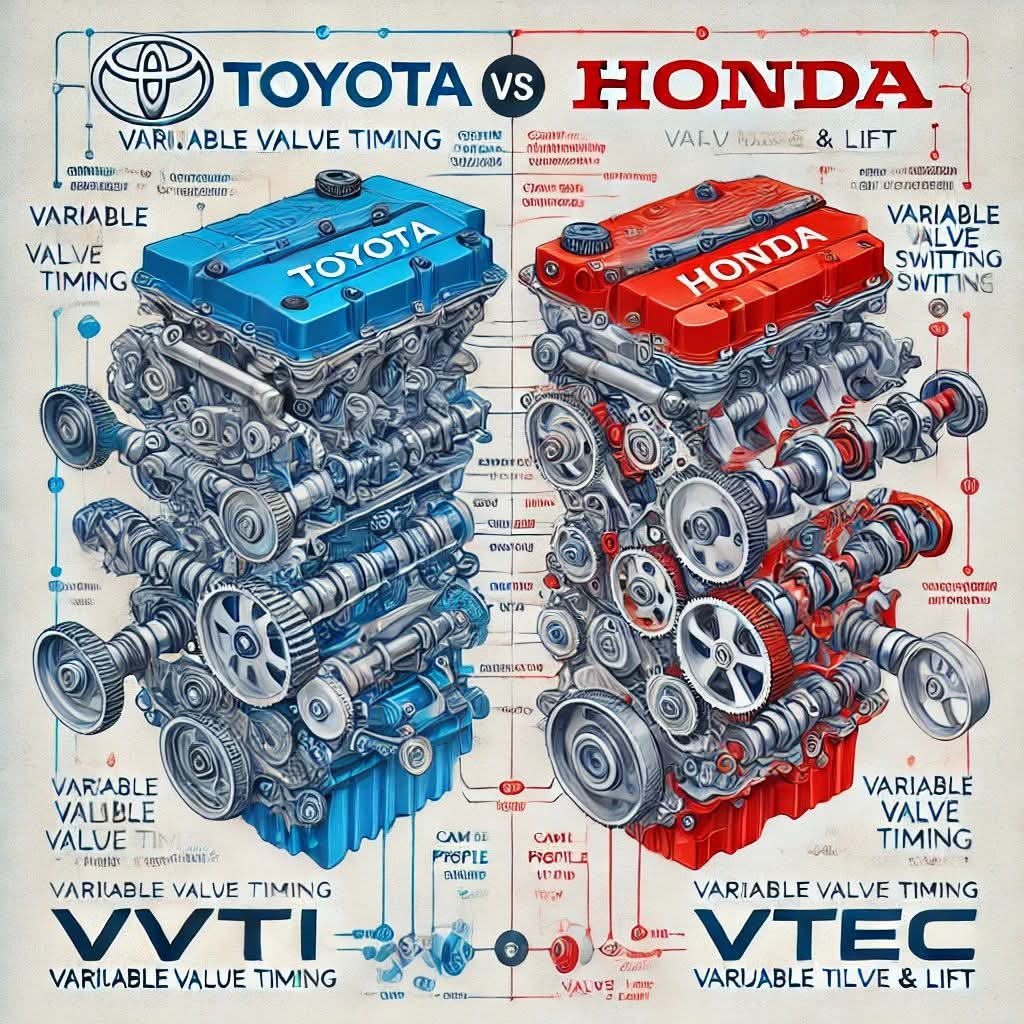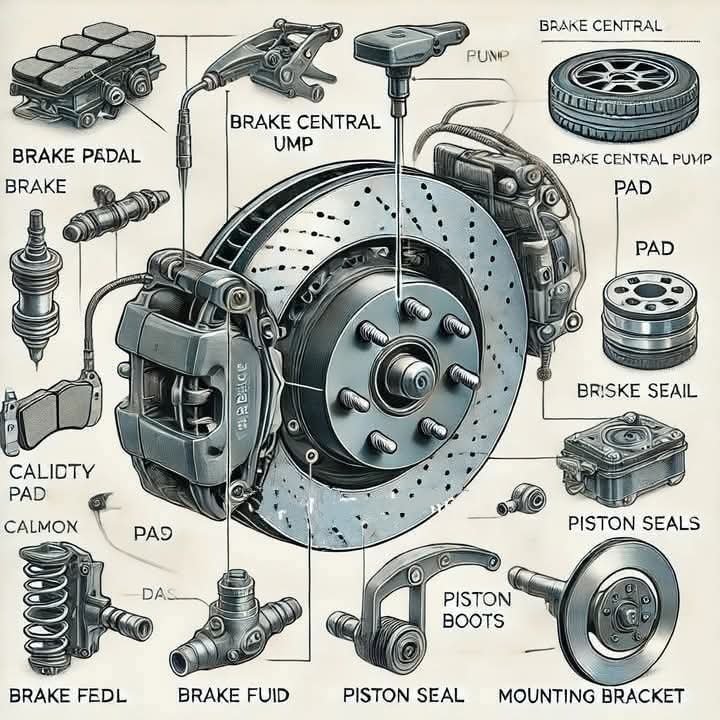A detailed technical comparison between Toyota's VVT-i (Variable Valve Timing with intelligence) and Honda's VTEC (Variable Valve Timing and Lift Electronic Control) engine technologies. Toyota’s VVT-i system optimizes valve timing to enhance fuel efficiency, emissions control, and engine performance, dynamically adjusting valve operation based on driving conditions. Meanwhile, Honda’s VTEC system takes it a step further by not only modifying valve timing but also incorporating valve lift control, enabling higher RPM performance, improved horsepower, and enhanced throttle response. This engineering showdown showcases two of the most iconic variable valve timing technologies, each excelling in different aspects—Toyota focusing on smooth efficiency and reliability, while Honda delivers aggressive power output and high-rev performance. Enthusiasts and automotive engineers continue to debate which system is superior, as both have shaped the evolution of high-performance and fuel-efficient engines in modern vehicles.
#ToyotaVsHonda #VVTiVsVTEC #PerformanceEngines #VariableValveTiming #CarTech #AutomotiveInnovation #JDMPerformance #EngineTechnology #FuelEfficiency #HighPerformanceCars #Horsepower #CarEnthusiast #TechComparison #CarEngineering #AutoTech
اقرأ أكثر #ToyotaVsHonda #VVTiVsVTEC #PerformanceEngines #VariableValveTiming #CarTech #AutomotiveInnovation #JDMPerformance #EngineTechnology #FuelEfficiency #HighPerformanceCars #Horsepower #CarEnthusiast #TechComparison #CarEngineering #AutoTech
A detailed technical comparison between Toyota's VVT-i (Variable Valve Timing with intelligence) and Honda's VTEC (Variable Valve Timing and Lift Electronic Control) engine technologies. Toyota’s VVT-i system optimizes valve timing to enhance fuel efficiency, emissions control, and engine performance, dynamically adjusting valve operation based on driving conditions. Meanwhile, Honda’s VTEC system takes it a step further by not only modifying valve timing but also incorporating valve lift control, enabling higher RPM performance, improved horsepower, and enhanced throttle response. This engineering showdown showcases two of the most iconic variable valve timing technologies, each excelling in different aspects—Toyota focusing on smooth efficiency and reliability, while Honda delivers aggressive power output and high-rev performance. Enthusiasts and automotive engineers continue to debate which system is superior, as both have shaped the evolution of high-performance and fuel-efficient engines in modern vehicles.
#ToyotaVsHonda #VVTiVsVTEC #PerformanceEngines #VariableValveTiming #CarTech #AutomotiveInnovation #JDMPerformance #EngineTechnology #FuelEfficiency #HighPerformanceCars #Horsepower #CarEnthusiast #TechComparison #CarEngineering #AutoTech
0 التعليقات
0 نشر



